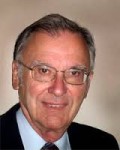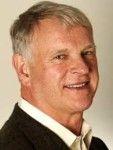Intel’s Transition to Success: From Memory to the Microprocessor
Location: National Instruments - Room 103
6 – 7 PM: Med-SIG – Matching Polypharmacy Solutions to Personas Info →
A great way to celebrate IEEE Day is by learning some fascinating history at this IEEE Event.
Here are some links related to this event:
National Geographic 1982 Story “The Chip”
Almost everyone in Silicon Valley recognizes Intel as the world’s leading semiconductor company, a position that’s based on their multi-decade dominance of microprocessors and the “Intel Inside” marketing campaign. However, few know the history of Intel’s early years as a semiconductor memory company, and that its development of the first commercially available microprocessors was a huge departure from its original roadmap.
By 1976, Intel had become a microprocessor company, competing with Motorola, Zilog, National Semiconductor and other major firms. Since no one had envisioned that MOS semiconductors could advance to compete with bipolar, microprocessors were targeted at embedded controller applications. When an Intel team convinced IBM to include its microprocessors in their first PCs, that game changer opened up a whole new market previously thought impossible.
A story almost hidden from history will also be told: the invention of the first combo Codec-Filter LSI chip, which facilitated time slot interchange within a T1 carrier (DS1). This created the market for digital switching in PBXs, central office switches and later T1 multiplexers.
This panel discussion, featuring semiconductor industry luminaries Ted Hoff and Dave House, will examine how Intel was able to succeed and dominate the semiconductor memory and microprocessor markets. The panelists will discuss Intel’s history from 1968 to the mid-1980s, including Intel’s response to many obstacles and competitive challenges. Many interesting inside stories will be included, several of which have never been publicly told.
 About the speaker, Ted Hoff
About the speaker, Ted Hoff Ted Hoff, Ph.D., was employee #12 at Intel. From 1968-1983, he worked on semiconductor memory, the 4004 and 8008 microprocessors, and telecom LSIs. He received the National Medal of Technology and Innovation from President Obama in 2010, the Stuart Ballantine Medal in 1979, the Franklin Institute’s Certificate of Merit in 1996, the Kyoto Prize in 1997 and the James Clerk Maxwell Award of the IEEE in 2011. Ted was inducted into the Inventors Hall of Fame in 1996. He is an Eminent Member of the IEEE’s Eta Kappa Nu, and an IEEE Life Fellow.
Dave House joined Intel as Semiconductor Memory Applications Manager in 1974, and became general manager of the company’s Microcomputer Components Division in 1978. Over the next 13 years he led the organization that developed Intel’s leading microprocessor product line, including the 386, 486, Pentium and Pentium II. Dave helped grow that business from $40M to $4B in annual revenue. He managed the team that developed the highly successful marketing program around the words “Intel Inside,” a term that he coined. Dave launched Intel’s Server Products Division in 1996, a move critical to Intel’s entry into the server business where it now has over 85% market share. He is currently Chairman of Brocade’s Board of Directors, and a proprietor of the House Family Winery.
 About the speaker, Dave House
About the speaker, Dave House
 About the speaker, Alan J. Weissberger
About the speaker, Alan J. Weissberger
Panel moderator Alan J. Weissberger is an IEEE Senior Life Member who has organized IEEE conferences, seminars, technical meetings and workshops for 40 years. He is the content manager for the global IEEE ComSoc Community website, manager and moderator of the IEEE Member Discussion list, N.A. Correspondent for the IEEE Global Communications Newsletter, and Chairman Emeritus and Advisor to the IEEE ComSocSCV chapter. Alan also volunteers at the Computer History Museum and ITHistory.org, where he writes technical summaries of lectures and exhibits.
Location: National Instruments - Room 103
4600 Patrick Henry Dr., Santa Clara, CA 95054
View Map & Directions
Early SIG meeting schedule:
6:00 PM – SIG Meeting (CNSV Special Interest Group) :
Note: Free Registration includes Main and SIG meetings, but please register. (See Ticket Info, above)
Co-Chairs: Shashidhar Sathyanarayana and Carl Angotti
Speaker: Mary Sorber, NightingaleRx
In this talk, Mary Sorber will provide a caregiver’s view of the methods and technologies currently employed for what doctors call the polypharmacy problem, and which non-professionals often experience as a “big bag of pills.”
Mary will review the scope of the polypharmacy problem, with a focus on chronic conditions in the elderly. She will also review six solutions and their impact, differences between clinical and home settings, and user interface implications.
Mary Sorber is founder of NightingaleRx, a consultancy that provides tools for patients and their caregivers to simplify management of multiple medications, and which offers user experience (UX) design consulting on home health medical devices for medication management. Mary has a background in user experience and information architecture, and she is now applying those skills in the area of health information and technology.




